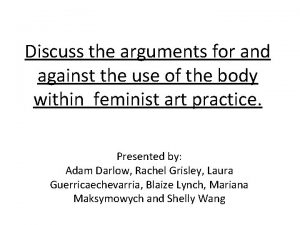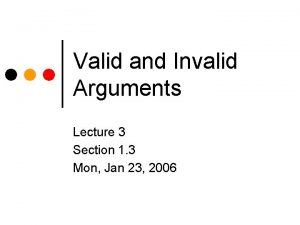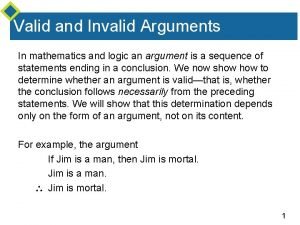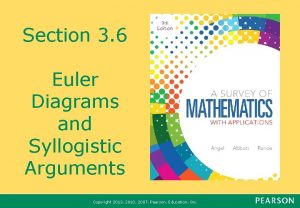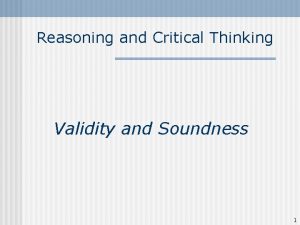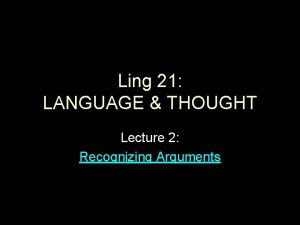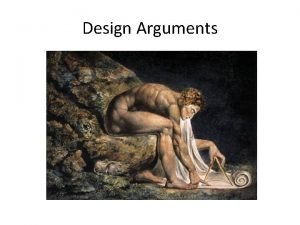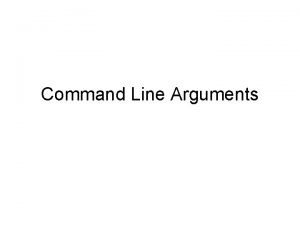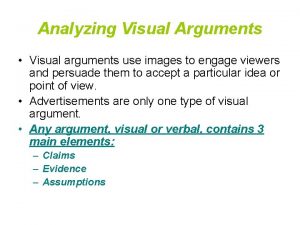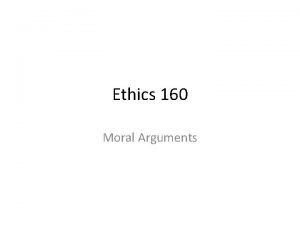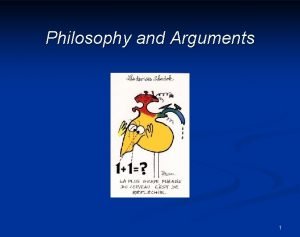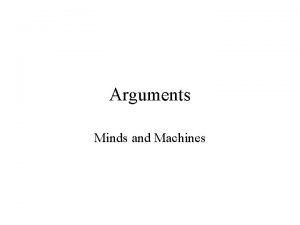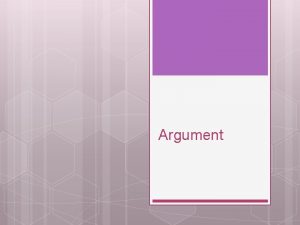Discuss the arguments for and against the use














- Slides: 14

Discuss the arguments for and against the use of the body within feminist art practice. Presented by: Adam Darlow, Rachel Grisley, Laura Guerricaechevarria, Blaize Lynch, Mariana Maksymowych and Shelly Wang

Greenberg • Many theorists looking into modernism beliefs revolved around the idea of simplified forms. With the likes of Clive Bell believing that movement was shown simplistic • Greenberg had a similar opinion as Kant that art work has its own beauty and that artist should paint with disinterest to allow the art to have purpose without being purposeful. • Greenberg highlighted his attention on formal properties of art- color, line, space and so forth and backed his theory with his essential elements (Pure Form, Flatness, Purely Optical Experience, Norms and Pro-Practice)

Flatness • One of Greenberg’s elements is the use of flatness in modernist art, the idea that artist will call direct attention to the fact that people are viewing art. That the art was not created to call attention to itself, so it would call attention to the natural flatness. • The viewer is not meant to appreciate the depiction of anything, but the physical act of painting itself. • Artists would openly acknowledge the limitations of trying to apply depth to a canvas, a two-dimensional surface • Transitioning into Post-Modernism, Greenberg’s theory/opinion was contradicted as body art popularized…

Carolee Schneemann "My work became a bridge that had to be crossed by young feminists working with their bodies" • Her work portrays aspects of the female body that have been traditionally disregarded by male conventional ideals. • Before such performances virtually all depictions of female sexuality were altered by male artists or found in pornography. • Schneemann’s supposed “vulvic space” combined female art work with sexual experience. This shifted it towards a feminist exploration of the body and away from the dominant male art examples. “When a woman (creates a nude selfportrait), it is trivialising the aesthetic, but when a man does it, it is part of his heroic domain or domination of subject” Carolee Schneemann, “‘Interior Scroll” (1975) Schneemann responds to male art critics who criticized her at the time, by pulling a scroll out of her vagina with her criticisms and then reading out their criticisms.

• • • Her body art practice is seen as a breakthrough for generations of feminist artists who wanted to produce intimate, social and political work with their bodies. Such bodily displays were deemed necessary in order to break taboos. By doing this female artists could expand the discourse about their bodies and confront social stigmas. It is of huge significance in the history of performance art. Her belief in the empowerment of the female body, and the provocative work of those concepts in painting, performance, film, and sculpture helped return women’s bodies back to themselves. (Womanhood movement). She helped situate women as both the creator and as an active part of the creation itself, giving the female form in art a subjectivity it previously lacked. • Schneemann was criticized by the male centered art industry for self-indulgence and narcissism. They did not understand how nudity could be used in art to remove objectification through self -ownership. • Most men at the time in the art world did not want to deal with embodiment as It seemed chaotic. Schneemann is a critic of the male gaze playing with their desires/senses which is what modernism wanted to get rid of. • Some critics such as Mary Kelly, criticized the performance and art by feminist artists for being naive and idealistic. The question of retaining the distance between the art and the artists body becoming a signifier was seen as problematic.

Amelia Jones • Text referenced: Body Art/ Performing the Subject ‘Body art asks us to interrogate not only the politics of visuality but also the very structures through which the subject takes place’ Chapter 1, Page 23 • Jones is stating that the viewer should consider not just the image that’s created through body art but also question the overall imagery of the person creating the piece and the process of the works creation. • This can be recognised in Schneemann’s work ‘Interior Scroll’ as during the artist’s performance of pulling a scroll form her vagina, the artist is using her body and exposing it in it’s entirety along with male criticisms in order to comment on how body art was male led. • This consequently catapulted the image of the female body and feminist artwork into the spectrum of body art.

Body Art and Post Modernism • Chapter 1: ‘Postmodernism, Subjectivity and Body Art: A trajectory’ ‘Postmodernism as a pastiche, allegory or montage: Resisting the Body/Self’ • ‘Postmodernism came increasingly to be defined not in relation to subjectivity, identity or embodiment but was generally stripped of its corporeal politics and situated in terms of production’ Page 29 • With this comment from Jones, she is addressing the fact that during the postmodernist movement the subject of an artwork and the physical presence of the body are dismissed and as a result of this, only the process of the works creation is appreciated and recognised when confronted by an audience. • ‘only art form to guarantee the presence of the artist’ Page 33 • Here the Art Historian defines her argument for the use of the body in feminist art practice as she is implying through this comment that body art is the most efficient and effective technique that ‘raises the question of the ‘real’ in relation to the subjects and objects of production and reception’.

Transition into Post-modernism Contrasts to Greenberian theory • Body art moved out of the gallery and in to real life, (using the body rather than simply representing it) this is seen in Artist’s work such as Allan Kaprow, ‘The Happenings’ where he challenged people by not adhering to social norms • Art became more political • Artists like Kaprow and Pollock became a problem for modernist artists because distanciation/optical distance and experience is lost – this is due to the artists performative stance of creating work using the body, and the viewer can register the artists movement.

Yves Klein • Artist is visible in the painting so the audience cannot avoid thinking about them (performance art) • The art involves intersubjectivity – the artists view as well as the viewers view are both important to the art work. Whereas modernism is pure with no interruption of involvement from other sources.

• In his performances, Klein reveals what is hidden in modernist painting – the white western man behind the canvas. • Klein deploys the male artist’s body in the performance opening it up to interrogation and interpretation. • He deconstructs the way the painting is made and highlights the fact that it is made by bodies. Through the performative role he plays, Klein draws attention to and critiques the male artist.

Mary Kelly • She was engaging in a discussion that was happening at the emergence of second-wave feminism about the way in which women worked in the home. At a time where many feminist artists were looking at reclaiming the body through performance – such as Marina Abramovic and Carole, Kelly looked more directly at the invisible daily experience of women engaged in domestic labour. • “when the image of the woman is used in a work of art, that is, when her body or person is given as a signifier, it becomes extremely problematic. Most woman artists who have presented themselves in some way, visibly, in the work have been unable to find the kind of distancing devices which would cut across the predominant representation of woman as object of the look, or question the notion of femininity as a pre-given entity. ”

Mary Kelly • In Post-Partum Document, she documented her pregnant belly as art but it is the work she made after the birth of her child • It is an extensive document of the mother and child relationship and of the nature of motherhood. • The work is in six sections and contains over a hundred items of documentation from the vests to diary notes, graphs and other data and artefacts such as stained nappy liners. • The women’s movement of the 1970 s was rooted in a shared understanding that the personal is political, Post-Partum Document puts this theory into practice and turns it into art.

Ana Mendieta: Immigrating from Cuba to America. (1960) Earth Body Performance Art. Involving the body in performance rituals belonging to Santerian beliefs. (Returning to the womb of mother Earth) • Timeless aesthetic form: “Reminiscent of stone-age goddess sculptures. ” • Affirmation of power through the identification of the female body with nature. • Intersubjective engagement. • Concern with the place of women of color within the feminist movement of the seventies (Exhibition: Dialectics of Isolation) • Absent body can be read as a symbol of displacement. (In relation to her specific experience as an immigrant) • The use of blood as a reference to violence against women (Rape 1993) and also a source of power and life. • • •

Feminist counter-argument to the use of the body: • Essentialist understanding of the female body. • “An omnipresent female force. ” Mendieta is trying to recover a matriarchal image. • Griselda Pollocks criticism: “By assimilating the female body to nature, Mendieta affirms a female specificity; a difference in essence between man and woman. This has the disadvantage of contributing to the perpetuation of a system of domination founded on the opposition of the sexes. ”
 Popular arguments for and against interscholastic sports
Popular arguments for and against interscholastic sports Difference between emotivism and prescriptivism
Difference between emotivism and prescriptivism Eleven arguments against moral objectivity
Eleven arguments against moral objectivity Arguments against art
Arguments against art Secular arguments against abortion
Secular arguments against abortion How outsourcing affects us economy
How outsourcing affects us economy Amateurs talk strategy professionals talk logistics
Amateurs talk strategy professionals talk logistics What is at the root of most arguments and many fights?
What is at the root of most arguments and many fights? Valid vs sound
Valid vs sound Invalid argument example
Invalid argument example Invalid arguments examples
Invalid arguments examples Euler diagram syllogism
Euler diagram syllogism False premise example
False premise example Arguments and explanations
Arguments and explanations Examples of sound and unsound arguments
Examples of sound and unsound arguments



